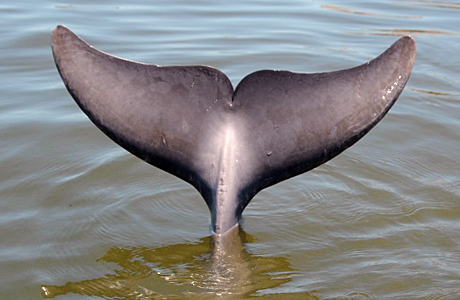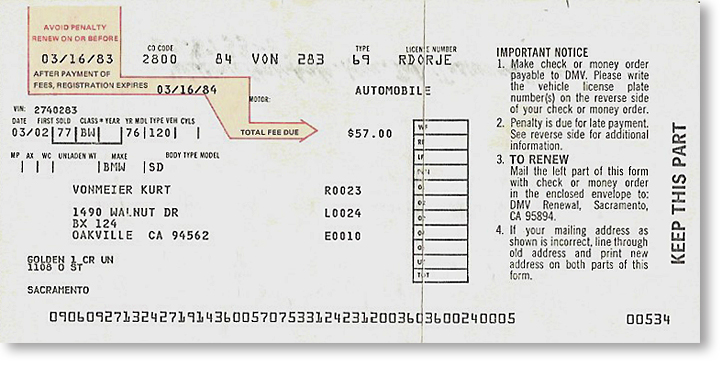The Madake bamboo growing at the Diamond Sufi Ranch went to seed around 1975, during which Kurt penned this homage to the bamboo grove and periodicity overall. Using a tale of teacher and student, he weaves a Zen-like parable of birth and death and the seasons of life. As he writes, “The scene could have been from one of those lushly filmed samurai movies.”
Rrrose Ith
This fictional story, rather unlike many of Kurt’s others, tells a complete story—from beginning to end—and includes themes and subjects that later appear in The Omasters, which indicates this work is preliminary to the unfinished book Kurt and Walter (Clifford) Barney initiated. A main character, Rrrose Selevy (an intentionally misspelled version of Marcel Duchamp’s alter ego, Rrose Selavy) has a prominent role, and speaking with a lisp, she imparts secret knowledge to the “author,” Johnny Menotti, twin brother of Jim, who has died after racing his Triumph sports car over a cliff by the Pacific. Some action takes place at the Lilly Laboratory (a thinly veiled reference to John and Toni Lily’s dolphin research facility) and references to the masons, the Arthurian legend of Gawain and the Green Knight and Mozart’s Magic Flute round out the tale’s presciently feminist narrative arc about the coming change in male succession.
The Omasters - Constance Chang & Ignatz Fine
Set in the sulphurous waters at a hot springs, this excerpt from The Omasters introduces readers to the musician Constance Chang (otherwise appearing as The Yellow Pearl) and Ignatz Fine, the Chasidic Mandarin mathematician and mystic. Allowing Kurt to expound on esoteric principles, the character of Fine is both cipher for Kurt and a vehicle for advancing the story.
“Like the ancient sages, Fine contemplated the changes in the dark and the light, from which he divined the movements in the firm and the yielding represented in the 64 ordered patterns of the oracle called by the name of the Book of Changes, or I Ching.”
As for Constance, “I don't understand anything you're saying,” she told Fine truthfully.”
The OMASTERS - Message from Middletown
This short excerpt from a sheaf of neatly typed onion-skin papers utilizes one of Kurt’s literary devices, namely the use of a “message” to “Soofi Central” to spin a tale and ramble on about essentially anything. In this case, the topic is in part about a turd too large to flush, an exercise in Scheisshumor Kurt often found irresistible. Ultimately, after invoking the spirits of Tibetan Buddhism, he navigates to a discourse on prime numbers and Pascal’s Triangle via transformations based on Middletown’s roadsign. Classic von Meier.
The OMASTERS - Shakuhachi Unzen
Omasters, Kurt’s one-of-a-kind, unpublished work of fiction, consisted of tales taking place in three different realms, all connected by threads of narrative and various characters appearing through transformations within each realm. One such realm was the Teahouse of Necessity, bearing an uncanny resemblance to the Diamond Sufi Ranch (aka Samten Chuling). This segment features Shakuhachi Unzen, “dishwasher, flunky and garbage man.” He waits upon the meeting of a group of remarkable men. Kurt writes:
“Shakuhachi poured the milk of compassion into the pot on the hot stove, ground cardamom seeds, stirred in Lyle's Golden Syrup; like hopiscotch he covered a pattern over the kitchen floor worn smooth with retracing, the principle of design utilized by Harrison and Abramowitz for laying out paths at Brandeis University...”
One guest is Melvin Finnis, designated to lead meditation at the Teahouse. “Shakuhachi's technique with Melvin was to ask him questions which would conventionally, politely, require an answer of "No." He knew Melvin as practitioner of Perfection would be reluctant to utter "negative" thoughts, being at the rather literal level of the path. Melvin's left eye lid tic’ed whenever a NOT twisted his line of logical reasoning.”
What transpires is a unique game among the Teahouse denizens, a memory game filled with puns, quotations, arcane bits of information, integer sequences, chai, and fine cuisine.
GTO
Though the dangers of burning of fossil fuel receives considerable attention today (2018), in 1974 the very wisest among society were already ringing the alarm bell and advocating alternative energy sources. Kurt von Meier knew that “Lady California, bound and raped” was not the way, and he penned this short, poetic contemplation about harnessing geothermal energy. Not alone in his concerns, his voice and the voices of other visionaries were drowned-out by yet another in a series of global oil booms, a suicidal activity which continues today. GTO, whatever it meant to Kurt, was the designation of a gas-guzzling sports car sold by Pontiac.
The OMASTERS - Television Series
Kurt von Meier’s and Clifford (Walter) Barney’s Omasters consumed years of writing and reams of paper. Though never published (except in part, on this website) in final form, or for that matter, completed, the project was a source of energy and amusement—the embodiment of G. Spencer Brown’s Laws of Form and a lifetime of studying art, mythology, mathematics, and mystical traditions.
It also generated spin-off material for a television series: a story summary, an unfinished synopsis of episodes and scenes about its lead character, Matt Welles, and even a snippet of a screenplay. Yet another peek through von Meier’s magical looking glass, one can only imagine the world in which this television series would be broadcast.
Carlos the Horse-fly or Carlos the Bull-fly
A visit to Kurt’s sister Kathie yielded this story written by Kurt when he was in seventh grade in Carmel, CA, and published in the Carmel Pine Cone newspaper. Kurt was very athletic but among his peers, a bit short of stature; accordingly, this story about a small horse-fly that accomplishes a grand task reflects Kurt’s desire for greatness and glory, desire that later fueled both his academic and social ambitions.
Lletters to the Llama by Chico Carboneri
Assuming yet another of his myriad manifestations, Kurt dons the costume of Chico Carboneri sitting before his IBM Selectric typewriter hammering on the keys to the universe. Jumping between discourse and self-reference, wending its way into the trajectory of Omasters, Kurt plays Buddhist notes interspersed with crossings into Laws of Form. "An eye to FORM--The page TOP COPY, and the carbon and the carbon page are inserted. Shakuhachi's mind wanders into the KRYPTOCOSMIC realm, blending with the spirits of Dr. Jose Que, Primo the Fool, Z-Number (first of the cardinal states, with all appropriate deference to the form of the face of the void, being given a name which may be called: VOID, ZERO, THE WHOLE, THE ALL, ALLAH, BUDDHA.
AN AMA ZING
Here's another example of Kurt's poetic stream-of-consciousness, a meandering journey through the deep and connective tissues of his mind and feelings. It's difficult to tell over what period of time he wrote all this; the breaks and shifts of topic are sometimes sudden. As with his hand-written daily notebooks, Kurt worked in fits and starts. In a moment of self-reflection, he writes, "This is, in a way, an essay in imaginary statecraft/Stadtkraft powerrealestate. Aside, aside... This was before I knew Kafka, and the plot structure of a movie such as Fail Safe, in which each successive line is a freak-out such as to reverse the values of the previous line or plot event on the order of a periodic shifting of figure/ground, much as the values of the real and the imaginary interplay in certain mathematical equations (Eg. Newton in letter to Leibnitz, June 13, 1676)."
The OMASTERS - Primo
Primo "the fool" plays a central role in O'Masters; he's one of the crew struggling to figure out how to navigate the star-ship Adamantinos away from the black hole towards which it is falling. In this short sequence, Kurt advances the story line by introducing aleatory and intuitive navigation elements, essentially clues in a cosmic puzzle. "A scorpion image referenced volume One of Science and Civilization in China, with the number 10,000. Scorpion in a sand circle, two to the sixth power, 64. Sixty four squares: chess, the Zoroastrian game of Asha, zero-sum, black and white, Ahriman and Ahura Mazda, the I Ching."
Professore Dottore in the Bathhouse
In addition to his scholarly, mystical self, Kurt was a sensualist. Food, drink, smoke and sex fueled his imagination and his life. In this fictional short tale, we find Kurt's alter-ego Jose Que indulging his sensual side in a bathhouse as he floats in the tub contemplating his navel. A sexy rendezvous with Joyce James stimulates an orgy of number sequences and passages from Finnegans Wake playfully tossed between the two lovers. "In the dawn we shall see swords," mused Que, as if in prophetic trance. "But for 1132, on page thirteen, we have 'ants or emmets wondern upon a groot hwide Whailfisk,' d'ya hear?" Joyce deliciously rolled her words into the brogue. "Which lay in a Runnel." Que continued the line. "I do not hear your injunction," she punned,"and would not unless you lay first for my pillow, love."
The Ascent of Adamantino...
To engage with Kurt was to enter his world, a playful one filled with multicultural richness and soaring flights of imagination. In Kurt's fiction, one often finds him in one disguise or another; enjoying many emanations was his theatrical brand of self-referential paradox. In the text, he lays this out plainly:
"The realities of life end death, consciousness and physical manifestation, the nameable and unnameable Tao--these choice dichotomies, and the whole of Boolean algebra and binary logic, Leibnitz and the I Ching, the good Doctor wondered at and lived through as a trade-off between Interaction and Equilibrium in a comingled universe of reality and dream."
This story contains many characters later incorporated into Omasters, and this episode--filled with fine food, good coffee, liquor, hashish, cocaine and sex--highlights Kurt's sometimes all-consuming style of sensual energy.
Norman Akaya and Jose Que's Blue Beamer
Herewith another installment of the story of Norman Akaya and his uncle Jose Que (Kurt's alter ego). Drawing upon Kurt's commute to Sacramento State to lecture on Tuesdays and Thursdays in his blue BMW (license plate RDORJE) in 1982, this segment slides seamlessly between fiction and fact, like tires slipping on a rain-slicked road. "But it was on the road that Jose Que worked for his money. There, emeritus or not, his actions and those of all the other travelers entailed consequences in the immediate. Jose rode what was once the Ultimate Driving Machine, lightweight, responsive, amply powered, well-braked, the classic 2002; with some internal modifications, because a logical sixty miles an hour meant a nice harmonic of 3600 r.p.m."
Buddy Meier's Dream
Kurt rarely wrote about his own life in a straight-forward way, preferring to place biographical information within a fictional context. His theatrics and bluster masked a deep sensitivity, and whatever hurt or trauma he suffered slipped readily into fantastic narratives filled with imaginary characters, some of whom he later incorporated into Omasters. This fictional piece, however, features Buddy Meier, and the resonance of his early life, including his mother, her apple pie, and the spectre of his father, who died when Kurt was only eleven years old. "Miss your daddy, do you Buddy boy? Well he is a logger in the forest of night, logging a long cruise like a wallowing Walloon, your lowland version of a Flying Dutchman, who may now be wending the tortuous way home to the Rome of our beautiful apple pie perennial, cooling atop the oven...," he writes, in the voice of his mother. One part a Joycean Alice in Wonderland, another an excursus on The Void, and yet another pure Buddy Meier.
Play of Dharma
Sometimes Kurt kept his notes in blue-lined paper notebooks and sometimes he kept his notes by typing them. Accordingly, this typewritten document leaps around--in much the way Kurt's mind moved concentrically rather than in a linear fashion. Is it poetry? Is it prose? Are these random notes of a wandering intellect? Red, white, black...the colors of the Triple Goddess; the thread is there to follow. Kurt sometimes called himself "a priest of Dionysus"...and are those mushrooms growing from the head of the Greek god?
The OMASTERS - The Eisteddfod
Herewith another segment of Kurt's fictional Omasters, this time featuring Aubrey W. Holz, Johnny Walker, Marque Dutchman, and the wise lady Hildegard,
"'What is simple is hard,' said Hildegard, a character played by the Abbess Hilda, whose companions were geese, who was of royal blood, Anglo-Saxon, and whose monastery at Whitby, aka Streonshalh, set above the white chalk cliffs, as at Leucadia where those sea heifers were sacrificed to Poseidon, over the edge, into the Adriatic Temples to Apollo."
Filled with arcane references to esoteric teachings and explicating models of cognitive neuro-psychology, it's classic von Meier in full polymath mode, up to and including the torn corner of a yellow paper napkin.
The OMASTERS - Incarnation of Dionysos
Here's another slice of Omasters, the unfinished esoteric novel Kurt developed with the assistance of Cliff Barney. This serving includes reflections by Dr. Jose Goldolphin Que, the alter-ego of Dr. Kurt von Meier, a generous portion of literary and mythological references, and the dubious Sperm Whale shenanigans of Ahab McGaffe, at home in his 'Vegas saloon, The Double Cross.
Having Shit, Soaked and Shaved
One part biographical, one part fantasy, Kurt's dip into Sheisshumor takes place, naturally, in the bathroom of the Teahouse of Necessity, aka, The Diamond Sufi Ranch, where "on the back of the john door was mystic-taped the yantra of Elimination." In keeping with all things "Kurt" he finds both amusement and profundity in the mundane. Quoting the revered Tibetan Lama Longchempa, he notes, "Since everything is but an apparition, having nothing to do with good or evil, acceptance or rejection, one may as well burst out laughing."
Beelzebub Hamiltonian Fly
As in many of Kurt's flights of fancy, this excerpt from an early draft of Omasters begins with a story and ends in a cascading maelstrom of associative ideas and images. Kurt did not think, and therefore did not write, in a strictly linear fashion. His mind packed with references and information, like James Joyce in Finnegans Wake, Kurt seamlessly jumped from one point in space (mind) to another. "BHF deserves a personalized introduction, like St. Puce, the flea under the armpit of Christ as He hung on the Cross: the first communicant. BHF is the first to pass through the Black Hole of the inner man." The excerpt introduces a number of Omaster characters by name.







































